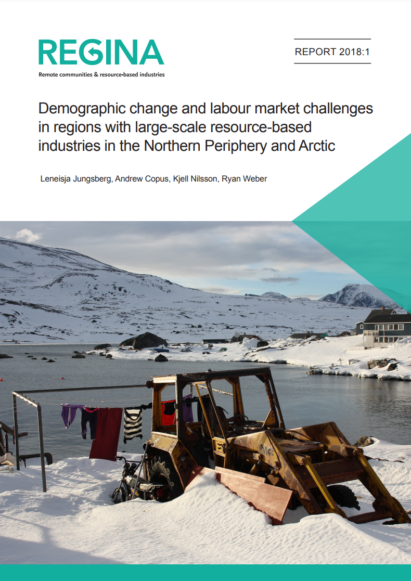Low population density, low accessibility, low economic diversification and abundant natural resources are common characteristics of Northern Periphery and Arctic (NPA) areas. At the same time, ageing populations and the emigration of young people are key challenges facing many communities. The REGINA1) project provides local and regional practitioners with a deeper understanding of demographic and labour market trends and challenges in NPA regions in Finland, Greenland, Norway, Scotland and Sweden.
Alongside social impact management and increasing local benefits associated with large-scale natural resource industries, ‘demography and labour markets’ form one of the three strategic planning pillars of the Local Smart Specialisation (LS3) concept, as developed in the REGINA project. This report describes this pillar from a planning and policy perspective. In Section
One, the essential concepts and issues related to demography and labour markets are introduced, followed by an analysis of the current demographic and labour market situation in the communities participating in the REGINA project in Section Two. Sections Three and Four offer tools and approaches to help practitioners further understand the local demographic and labour market situation in their communities to support evidence-based policymaking. They describe examples of policies to improve demographic trends and labour market conditions that have been applied in other NPA communities and regions.









